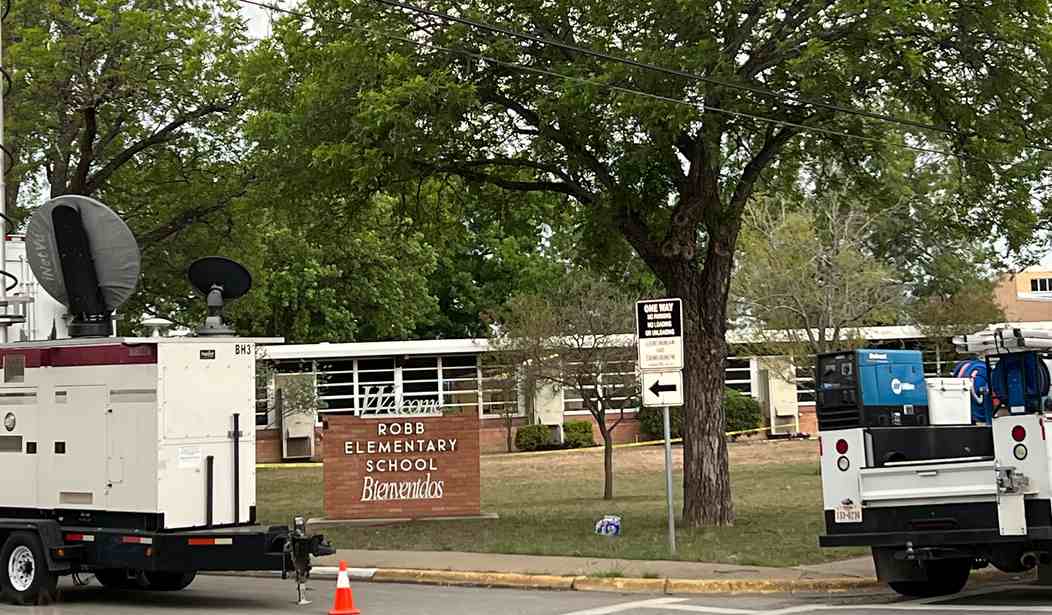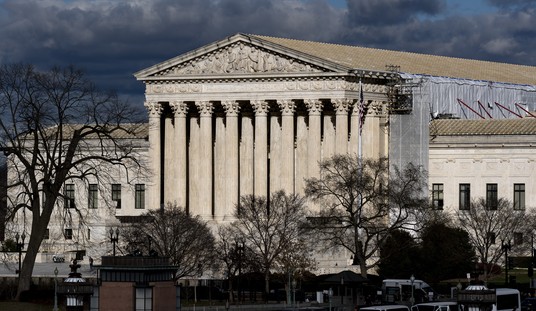Just how much of this new report from the Department of Justice is new — or news? The Texas legislature issued a devastating report on the mass shooting in Uvalde back in July 2022, which finally forced some people out of their jobs, although clearly not enough of them. That report, although relatively brief at 77 pages (apart from the table of contents), clearly laid the blame on the school for not taking its active-shooter security seriously and failing to maintain its security hardware and processes. The report tore into the responders even more for cowering in the hallways rather than acting to stop the shooting and ignoring their active-shooter training.
Eighteen months later, the DoJ has a 600-page report that reaches essentially the same conclusions:
A scathing Justice Department report into the 2022 mass shooting at an elementary school in Uvalde, Texas, described “cascading failures of leadership” and directs blame at responding officers for failing to confront the shooter sooner.
The review team “identified several critical failures and other breakdowns prior to, during, and after the Robb Elementary School response,” the report found. …
The Justice Department assessment builds on a report issued in July 2022 by a special committee of the Texas state legislature which described a series of “shortcomings and failures” in the law enforcement response.
Members of the review team visited Uvalde nine times, spending a total of 54 days on site and conducting more than 260 interviews with individuals from more than 30 organizations with knowledge of the response.
This seems rather … unimpressive. Investigators spent in total less than two months conducting interviews in Uvalde, and it took twenty months to complete the report? That’s eighteen months after the Texas legislative report, which should have accelerated the DoJ effort to produce their own assessment.
So what’s new in this report? Politico promises that it will “add to the public understanding” of the “cascading failures” before and during the shooting, but doesn’t actually offer any new information. Indeed, their report acknowledges that it covers pretty much the same material:
Even for a mass shooting that has already been the subject of intense scrutiny and in-depth examinations, the nearly 600-page Justice Department report adds to the public understanding of how police in Uvalde failed to stop an attack that killed 19 elementary students and two teachers. …
The shooting has already been picked over in legislative hearings, news reports and a damning report by Texas lawmakers who faulted law enforcement at every level with failing “to prioritize saving innocent lives over their own safety.”
In the 20 months since the Justice Department announced its review, footage showing police waiting in a hallway outside the fourth-grade classrooms where the gunman opened fire has become the target of national ridicule.
The ABC article on the DOJ report highlights the 77-minute delay in entering the classroom, which is mind-boggling indeed. However, that only barely differs from the Texas legislative report, which put the time at 73 minutes. Their report titled one section, “What Happened for the Next 73 Minutes?'” to emphasize that finding. And to emphasize it even more, a subsequent section is titled, “What Didn’t Happen in Those 73 Minutes?”
In fact, if one wants to see the cascade of failures involved in the Uvalde shooting, one need only turn to page 69 of the July 2022 legislative report. That gives a step-by-step list of the failures by the school, the family of the shooter, and especially law enforcement. The total number of responders that arrived to address the situation comes up to 376, but only the Border Patrol seems to have grasped the urgency. They just took over and finally breached the classroom after watching more than 200 other LEOs refuse to act.
If this new and belated DoJ report adds to “public understanding,” then great, but at least in Texas, the public understands the event well indeed. The state’s legislative investigation may have used more brevity, but it has held up well as a comprehensive explanation of the actual “cascading failures.” The national media tried to turn this into a gun-control issue, helped in no small way by Robert Francis ‘Beto’ O’Rourke, who grandstanded over it at a community meeting attended by his opponent in the gubernatorial election, incumbent Greg Abbott. When it became clear that this was an incident driven by mental-health issues, failures to enforce the law, and the aforementioned “cascading failures” of police during the event, the national media lost interest — but Texans didn’t.
As of the writing of this post, the DoJ has not yet posted its report. It’s not clear that media outlets got it ahead of time either, or are just reporting based on DoJ briefings about what it will contain. Perhaps it will reveal even more failures that previous investigations failed to uncover and will extend our understanding of the mass shooting at Robb Elementary. But after 20 months, that will be of little value to the families of the victims and the community that these agencies serve.
Merrick Garland gave a press conference this morning in Uvalde to introduce the report. Nothing Garland said from the podium about the conclusions of the report differs from the July 2022 report from the Texas legislature, with the exception of criticisms about how law-enforcement agencies handled notifications to the families of the dead. That may be useful for training in the future, but that shouldn’t have taken 20 months to produce either.








Join the conversation as a VIP Member